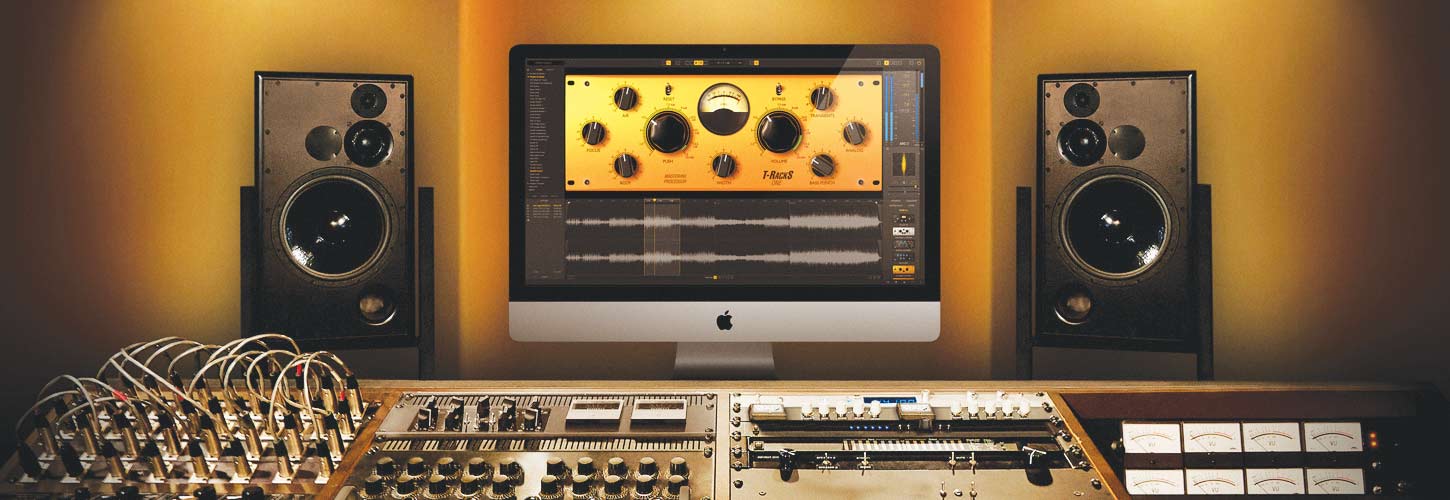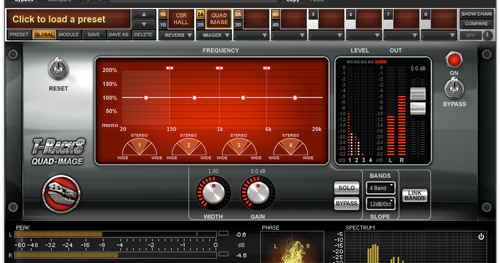


The nine modules consisted of three different compressor models, three EQ models, two limiter models and a clipper. This was the T-Racks structure that has come down to us largely intact in the new version 5. With version 3, the modules were standard plug-in formats and could be individually used in most PC and Mac DAWs, so T-Racks outgrew its original mastering-only charter and its modules also became of value in mixing work. In standalone operation, multiple files could be loaded for mastering, and this was an excellent way to prepare multiple tracks for CD release, being able to easily hear tracks in relationship to one another and to experiment with ordering the tracks. This framework also provided for a metering utility suite. Individual modules could be zoomed in upon for settings. The framework allowed for eight consecutive slots, the first four being dual parallel slots, into which the T-Racks modules could be placed as desired (see image just below). It was comprised of nine processing modules, a comprehensive (for the time) utility metering capability, and finally a framework into which the modules could be run for mastering purposes. T-Racks 3 took on the form to which we have become accustomed. Also, version 3 was where T-Racks entered my life, and I’ve been an enthusiastic user ever since. But version 3 was a major release, and from there on the history is much easier to track. It was not until I got to version 3, introduced in late 2008, before I managed to pick up the trail once again. Using google, I could not find a single reference to it anywhere on the web. If there was a version 2 of T-Tracks, its introduction must have been very subdued. It only operated in an autonomous, stand-alone mode. Its purpose was mastering only, and it had only three processors: an EQ, a tube compressor and a limiter, plus it offered a rudimentary metering capability.

Naturally, it was quite primitive by today’s standards. Let’s start by taking a brief look back to see how we got here. As such, we’ll primarily be looking at T-Racks 5 as a mastering tool, which was its initial raison d’être. I will spend a little time discussing four new plug-ins that are part of the release, but we’ll mostly be concerned with the framework. However, I am going to focus here on mainly the framework aspect of T-Racks 5. T-Racks 5 has components of use in all phases of the music production process, and most of these components are plug-in modules that can be individually used inside all major DAWs in both the PC and Mac worlds. This article looks at T-Racks 5, a recently-released new incarnation of one of the flagship product collections from IK Multimedia (hereafter IKM). How did they do? The results are … ahem … sweet! They’ve upped their game once again with version 5. T-Racks is IK Multimedia’s signature mixing/mastering suite.


 0 kommentar(er)
0 kommentar(er)
